P.PSH.2005 - Grazing system impact on livestock productivity, soil moisture and soil organic carbon
The project was set up in 2020 to discover the inter relationships within a grazing system of livestock productivity, soil moisture and soil organic carbon.
| Project start date: | 28 February 2024 |
| Project end date: | 30 April 2025 |
| Publication date: | 21 October 2025 |
| Project status: | Completed |
| Livestock species: | Grass-fed Cattle, Sheep |
| Relevant regions: | National |
|
Download Report
|
|
Summary
This project will develop ten trial sites across the New England region and establish the baseline data required to determine the optimal blend of pasture production and feedbase utilisation for improved livestock productivity and increases in soil carbon levels.
Objectives
1. Over five years this project will provide a comparison of pasture and resulting livestock production across twenty 40 hectare sites (two per site) using a high density / high inputs rotation and high density /low inputs grazing strategy.
2. Develop a set of standard land and soil benchmarks across all treatments.
3. Measure change in plant available water (PAW) and water holding capacity (WHC) for all treatments and report the impact of each management practice/grazing system.
4. Measure change in soil organic carbon (SOC) under the above grazing systems and report on the impact of each management practice/grazing system, and the interrelationship with WHC.
5. Measure and report on baseline pasture condition, species makeup, sward health and macrofauna of each demonstration site and compare the impact of grazing practices throughout the project.
6. Measure seasonal pasture mass (kg green DM/ha), estimate pasture quality and quantity, and provide an estimate of typical pasture growth rates expected for your pasture type/soil fertility/season, including any inputs.
7. Measure livestock production through live weigh gain (LWG) between the treatments throughout the project using an industry recognised method (to be agreed during development of the project workplan.
8. Participate in an MLA facilitated workshop and activities which will develop a carbon account for each participating farming system, using the approved MLA carbon accounting tool.
9. Provide industry communication and engagement through targeted events, media events and reports that drives project participation, awareness and adoption, as well as a final report outlining the outcomes of the program, including recommendations on best grazing management practices and their ability to increase soil profile carbon, pasture productivity and managements, and resulting livestock performance.
10. Provide evidence of how grazing best management practices can impact the whole of farm carbon footprint.
Key findings
- SOC % levels are variable within project paddocks and across all project sites. This variability can be attributed to factors including climate variability (rainfall & temperature in particular), organic matter input, soil microbiota, soil nutrient levels and soil types.
- Project core participants and other producers have also expressed an interest in how they might adjust their farming activities to influence and mitigate the variability factors in sequestering additional soil organic carbon levels over their properties.
- The relationship between soil organic carbon levels and soil moisture holding capacity can be better determined within a replicated trial plot scenario.
- Feedback surveys from producer participants and observers, indicate a real interest in soil organic carbon and the present and future relationship between SOC and productivity.
Benefits to industry
The project has confirmed a considerable number of factors that can be attributed to the variability in the sequestration of soil organic carbon in a pasture-based livestock enterprise. These factors include, climate variability, soil type, organic matter input, soil microbiota and soil nutrient levels.
The project has emphasised the usefulness of soil moisture monitoring to help producers make management decisions (when to buy livestock or feed, or when to sell livestock depending on soil moisture availability for pasture growth).
Field day feedback surveys over the course of the project have highlighted producers’ interest in gaining more skills and knowledge of the impacts of SOC in enhancing pasture and livestock production. Likewise, they are keen on gaining more skills in in-paddock pasture assessment and feed budgeting, to use when making grazing management decisions.
MLA action
The project was set up in 2020 to discover the inter relationships within a grazing system of livestock productivity, soil moisture and soil organic carbon. Data collection and analysis as required under the project methodology has clearly indicated the complexity and scale of variability in assessing the results.
Future research
This project was a demonstration (PDS) project, there are now some exciting and encouraging prospects for implementing future research project(s) to evaluate the key findings. Primarily, the hypothesis will seek to conclusively relate grazing management to generating soil organic carbon, based on the results and the limited conclusions from this project.
More information
| Project manager: | Sarah Hassall |
| Contact email: | reports@mla.com.au |
| Primary researcher: | Precision Pastures Pty Ltd |


